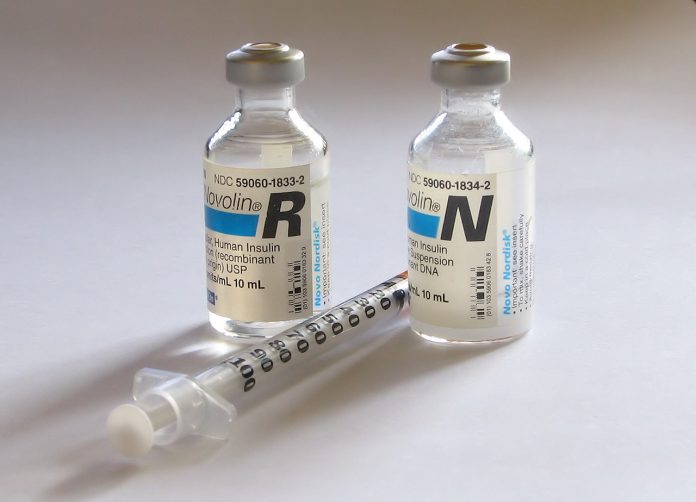
A collaboration between the University of Cambridge’s Nanoscience Centre and MedImmune is taking great strides towards safer and more effective treatment of obesity and Type 2 diabetes.
The Cambridge chemical engineers have been studying oxyntomodulin, a human peptide, which has the potential to be a safe and efficient form of treatment for both obesity and Type 2 diabetes.
One of the advantages of the new drug is that, unlike other treatments for Type 2 diabetes, it will not cause the patient to gain weight.
Sonja Kinna, a final-year PhD student, supervised by Professor Sir Mark Welland, who is investigating peptide self-assembly as a long-term drug formulation, said: “There is evidence that oxyntomodulin both reduces appetite and causes a slight raising of body temperature and increase of the heart rate, which will help with weight loss.”
She added: “In addition to treating diabetes, we see it as a potential weapon to fight obesity.”
Researchers have been examining the structural properties of the peptide, which can be stored in a fibrillar structure. This structure is inert but disassembles into a soluble state upon being injected under the skin, triggering the release of insulin in the body.
How will this new treatment fight obesity and Type 2 diabetes?
The traditional treatment of Type 2 diabetes involves injecting insulin directly into the patient. If too much insulin is applied, the patient can develop hypoglycaemia, but oxyntomodulin eliminates that risk by causing the patient’s body to produce its own insulin and balancing insulin production.
Kinna said: “We know peptides are very safe and [an] effective form of treatment, but the problem is that the body reacts to them as it would to proteins, treating them as food and therefore breaking them down. That’s why the ability to use oxyntomodulin’s fibrillated form is so important. We can use it as a depot from which the active peptide diffuses into the bloodstream over an extended period.”
Slow release from self-assembled structures creates a sustained action that circumvents the short half-life of peptides. This means the effect of the drug may last in humans for several days or even weeks.
Although the drug is potentially effective in its free form, it would have to be administered frequently, perhaps as often as every four hours.
There is, of course, much work to be done before any drug could appear on the market, and it must be carried out under very precise conditions. It is vital work, however. Not only does this study hold hope for better treatment for those suffering diabetes, but it also has implications for understanding diseases such as Parkinson’s which are caused when proteins fibrillate irreversibly.







